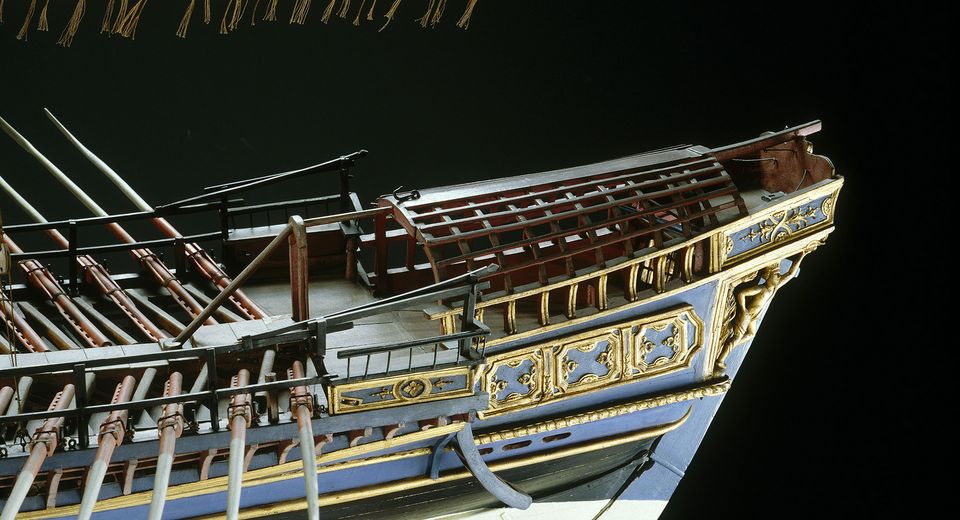The Dauphine
Toulon
The Dauphine, extraordinary galley
First half of the 18th century
Attributed to the model workshop of the Toulon arsenal
This period model represents La Dauphine, built in 1736 under the auspices of master shipwright Reynoir. It was one of the last two “extraordinary galleys” to be built in France and the last ship to bear this particular name. Renamed Espérance during the Revolution, it remained afloat until 1792 but no longer sailed.
The galley corps
 Enlarge image : Dauphine-_1_.jpg
Enlarge image : Dauphine-_1_.jpg
Such galleys were long, narrow vessels provided with oars and rigging with lateen sails. Quite fast and manoeuvrable, they were used by all the Mediterranean’s naval powers up until the 18th century.
In 1662, Louis XIV reintroduced the Galley Corps to complement his rapidly developing fleet of warships. Forty galleys were based in Marseille, their main port of registry. They were used as coastguard vessels and to protect trade. They were also highly prestigious craft, symbolising France’s supremacy on the high seas and the power of the Sun King. But above all, they were floating prisons, filled with convicts whose life expectancies were sorely limited in consequence.
The Dauphine
 Enlarge image : Dauphine-_2_.jpg
Enlarge image : Dauphine-_2_.jpg
La Dauphine was one of last two “extraordinary galleys” to be built in France. It was one of the largest vessels of its kind: it took 336 men, 6 to an oar, to propel the boat, which could sail at 4 or 5 knots at cruising speed for two hours or at 6 or 7 knots at top speed for a maximum of 15 minutes. In comparison, an ordinary galley “only” required 255 rowers to propel it!
By the time La Dauphine was built, development of ships of the line had rendered the old galleys obsolete. After all, how could they compete with the new seagoing fortresses? In 1748, a royal ordonnance abolished the Galley Corps and the galley slaves returned to serve out their time at the main naval shipyards.
Collection highlight
The essential works to see during your visit to the Musée national de la Marine in Brest, Port-Louis, Rochefort, Toulon, and soon in Paris.


